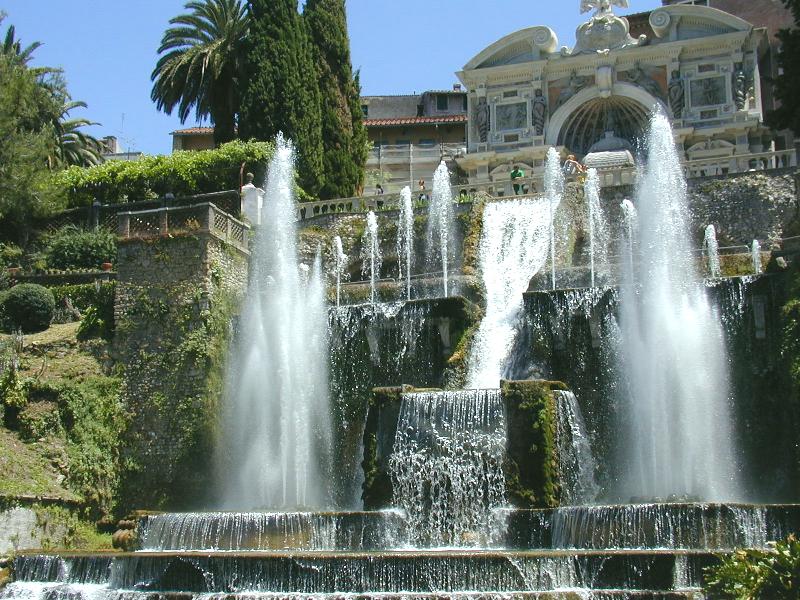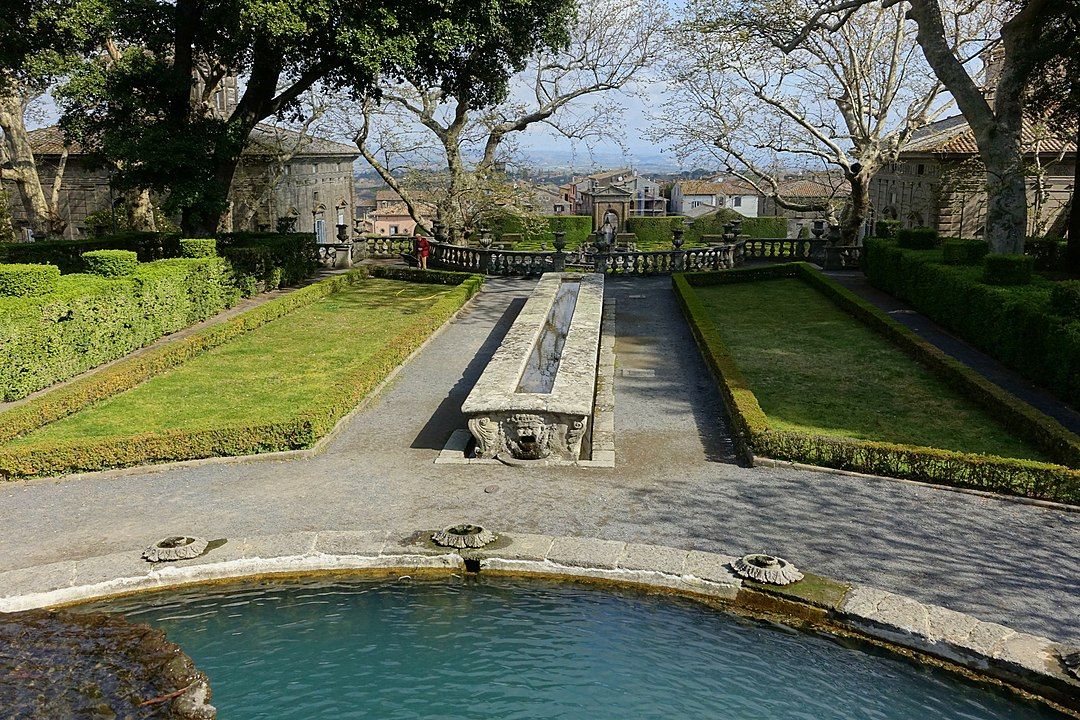Italian Renaissance Gardens


The Renaissance period of history saw great changes in society and culture from the middle ages. As it became safer to live outside of walled hilltop castle-cities, we see a change to living in fortified villas. This led to a change in garden design from enclosed cloister gardens of the middle ages to a new style that looked outwards and incorporated the surrounding landscape beyond it's walls as part of the overall design.
Historical Influences
The renaissance garden style started in Italy with a renewed interest by renaissance scholars of classical Roman models. They were inspired by descriptions of ancient Roman gardens given by Ovid in his 'Metamorphoses', by the letters of Pliny the Younger, by Pliny the Elder's 'Naturalis Historia', and in 'Rerum Rusticanum' by Varro, all of which gave detailed description of the gardens of Roman villas.
Otium
Pliny the Younger was an author as well as a high ranking lawyer and magistrate in Ancient Rome. He is famous for his letters that gave great descriptions of Roman everyday life in the 1st Century. As a wealthy nobleman, he owned a number villas and his letters that gave details of his county villas are of great importance to the history of garden design.
According to Pliny, the purpose of a garden was to provide a sense of Otium. Otium is a Latin word that has no direct translation into modern English. It generally means "leisure", but in Pliny's writings it means serenity, relaxation and escape from busy urban life (called negotium in Latin). Italian Renaissance gardens were designed with an emphasis on otium, and the productive elements of medieval gardens such as growing herbs or fruits were deemed as less important. Fruit bearing and plants used for herbs were incorporated into Italian Renaissance gardens more as edimentals than as in an agricultural or Hortus setting.
Design Principles of Italian Renaissance Gardens
The Italian renaissance garden style is first described in Leon Alberti's 'De re aedificatoria' (The Ten Books of Architecture) where he argues that a villa should both be looked at and a place to look from; that the house should be placed above the garden, where it could be seen and the owner could look down into the garden. Due to Italy's hilly topography, this led to a number of villas sitting in or above terraced gardens, overlooking the surrounding landscape.
On the specific elements of Villa Gardens, Alberti wrote "...You should place porticos for giving shade, planters where vines can climb, placed on marble columns; vases and amusing statues, provided they are not obscene. You should also have rare plants.... Trees should be aligned and arranged evenly, each tree aligned with its neighbours."
Most of Alberti's design principles for Italian Renaissance gardens were heavily borrowed from Pliny the Younger's descriptions of villa gardens in Ancient Rome.

Important Elements of Italian Renaissance Gardens
- Seamless Design - similar to the designs of late Roman villas, Italian renaissance villas were designed with their gardens as an extension of the building. Garden frescoes were painted inside the villa, bringing the garden inside; courtyards and terraces were modeled as outdoor rooms, extending the villa to the outside.
- Axial Symmetry - defined by the entry to the villa building, Italian renaissance gardens were designed along an axis that ran from the villa entry to the end of the garden, and each side of the axis mirrored each other in layout. The gardens were further subdivided by pathways perpendicular to the main axis, resulting in a grid pattern of similar spaces, often squares. These spaces were called 'compartmentii' and were usually bordered with a low fence or hedge.
- Surprise - as the renaissance gardens were built primarily for pleasure, they were designed with rooms hidden from view that were discovered while walking around the garden. Common features used to create surprise in Italian Renaissance gardens were unexpected views, grottoes and secret gardens.
- Evergreen - green was the dominant color and to provide year-round interest, Italian renaissance gardens made extensive use of Boxwood (Buxus sempervirens), Italian cypress (Cupressus sempervirens), Laurel (Laurus nobilis), Yew (Taxus baccata), Rosemary (Salvia rosmarinus), and Junipers (Juniperus spp.). All of which were able to be shaped into topiary to create sculptural forms and define areas of the garden. Creating Order and balance was the goal of renaissance topiary, representing man’s reasoned power over chaotic nature.
- Statuary - during this period, statues were used extensively in the garden as part of the extension of the home. Statues of Roman gods, goddesses and heroes of antiquity were commonly used as a deliberate emulation of ancient Roman Gardens. These statues were often restored antiques taken from ancient Roman ruins.
- Water Features - water was an important element due to the hot climate of Italy. Irrigation techniques advanced during this period, and the water became important focal points in the forms of fountains, streams and ponds to enhance the beauty of the garden.
Advances in Botany
During the middle ages, plants were studied for medicinal use. During the Italian renaissance, there was a great change in the study of botany through the systematic classification of plants and the creation of the first botanical gardens, Orto botanico di Padova in the University of Padua.
During the Renaissance period, Europeans started to establish trade routes with the Far East and the New World. This led to an increase in interest of exotic plants from around the known world, and later in the era of renaissance gardens these began to be used extensively as a show of wealth by the property owners.
Notable Gardens of the Italian Renaissance
- Villa Medici Fiesole - this is the oldest renaissance garden that still exists today. Built in 1530, this is a great example of a hillside garden with the villa built on a hill with terraced gardens overlooking the city of Florence, and strictly followed Alberti's principles for a villa and its garden layout. Since 2013, the villa grounds are now preserved as part of the UNESCO World Heritage site of the Medici Villas and Gardens in Tuscany.

- Villa D'este - located in Tivoli, the grounds of this hillside villa has extensive water features and includes 51 fountains, 398 spouts, 364 water jets and 64 waterfalls. Of remarkable note is the the fountain of Rometta, which is sculpted as a model of the ancient city of Rome.

- Sacro Bosco - located in Bomarzo, this garden bucked the trend of previous renaissance gardens with no axial layout or symmetry. This is an important example of the "mannerist" style which became popular in the later years of the renaissance as renaissance artists moved on from the goals of balance and beauty to create more bizarre and fantastical themes. This garden is famous for it's many unconventional statues and grottoes laid in a seemingly random fashion.

- Villa Borghese - located in Rome and developed in 1606 by Cardinal Scipione Borghese to replace the vineyards of the property into a landscape garden, suitable for its new use as a party villa. The gardens have been expanded on over the last 400 years and they are now open to the public, forming the 3rd largest public park in the Italian capital.

- Villa Lante - this garden is another example of the mannerist style. The Gardens were built by Cardinal Gambara and chart the story of original sin: paradise lost and paradise regained, represented by water that flows down the central axis of the garden and goes through a variety of states as it descends from a wooded 'boschetto' where nature is in control of its form, representing the golden age of man's innocence and nature's abundance; and eventually flows to ornate water parterres, representing the notion that nature no longer produces freely and man must live by the cultivation of his garden and intellect.

Post-Renaissance legacy
The Renaissance garden style in Italy eventually evolved into the Baroque style, which was less naturalistic and placed a greater emphasis on grandeur. The Italian garden style as a modern concept is mostly based on the design aesthetics developed during the Renaissance period.
The Italian renaissance style garden has been a great influence on the rest of Europe, even until this day, and laid the foundation for the French Renaissance and English Renaissance Garden styles that came after this period.





